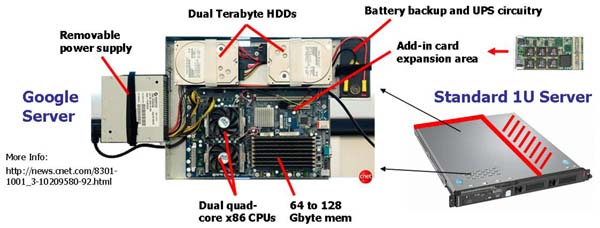Micro Server Acceleration
The term "micro server" is used to describe low-energy servers based on an array of ARM cores (or other low-energy type of CPU core) that handles general workloads, for example web server, database, and storage. General applications consume 1000s of servers in 1000s of server farms; energy savings are thus magnified and can substantially impact operating and cooling costs. Although micro servers offer substantially reduced performance compared to traditional Intel x86 based servers (e.g. Xeon, Core 2, iCore7, etc), the assumption is that many general applications either will run as-is or need relatively minor modifications to run effectively on micro servers. Accelerating some number of microservers in a given server farm may be necessary in cases where applications run compute-bound code; i.e. code that is not fully general-purpose, but has some compute-intensive content. In that case, inserting a high-energy consumption accelerator into a micro server defeats the purpose. A CIM array accelerator solves this problem, adding only 40 W (typical) to a micro server. This assumes the micro server motherboard has a PCIe slot.
Smaller, Less Energy
The trend in server evolution is always towards smaller and less energy. Decreases in size lead to increases in rack density. Decreases in energy consumption lead to lower cooling requirements (less airflow, avoiding the use of liquid cooling if possible). Both lead to reduce costs.Google's Engineered Servers

Google engineered server overview and accelerator compatibility constraints |
Google has recently released information about their in-house engineered servers. The picture at right shows information that Google published in 2009. Some highlights:



